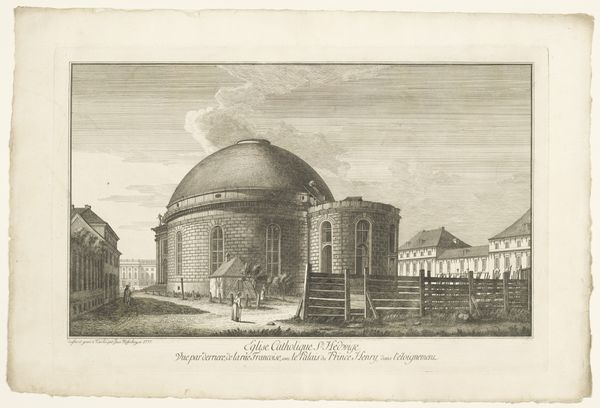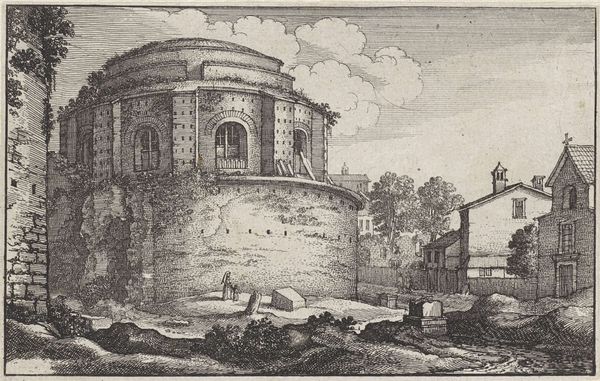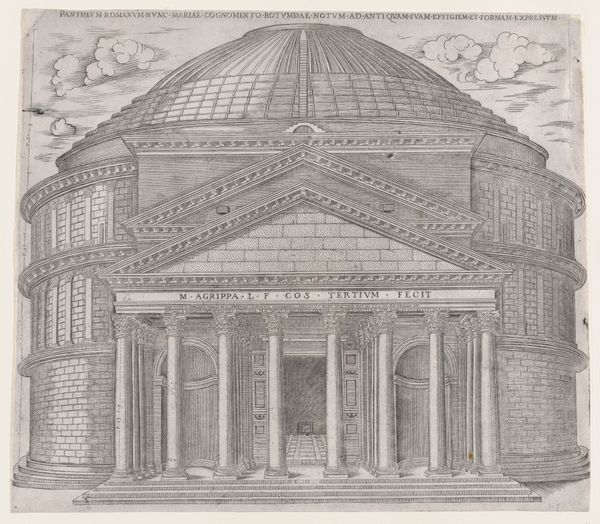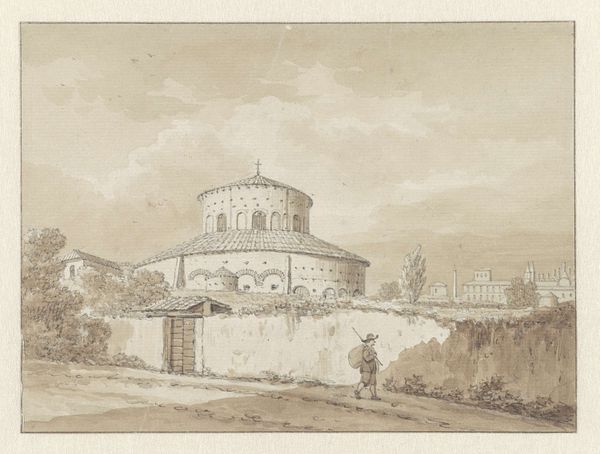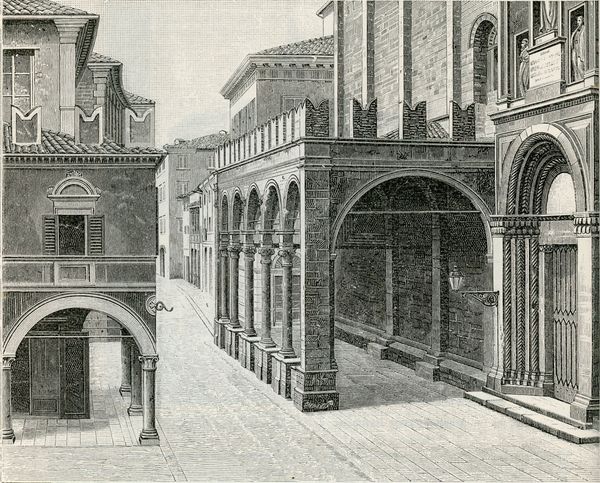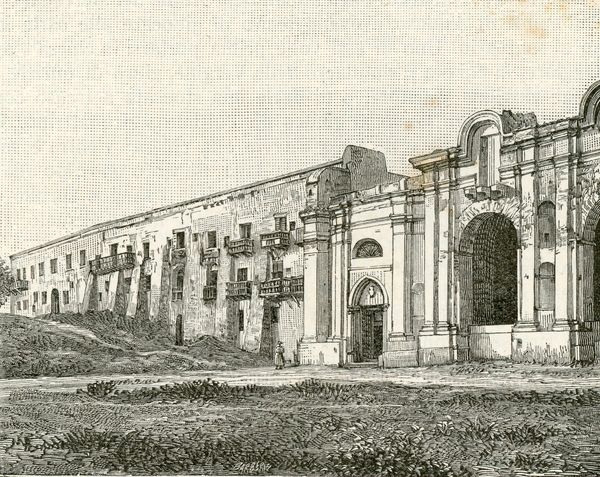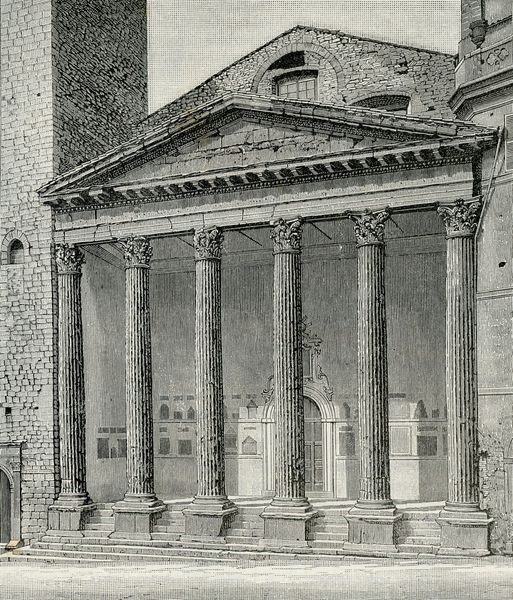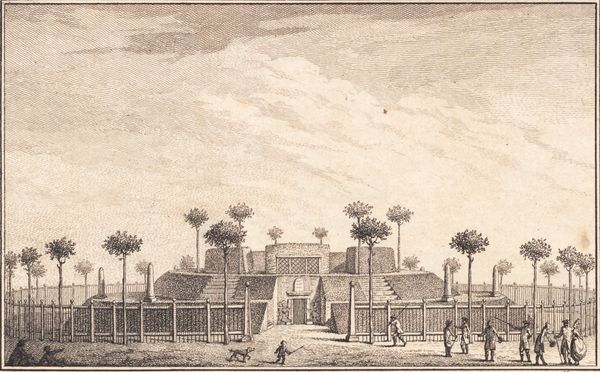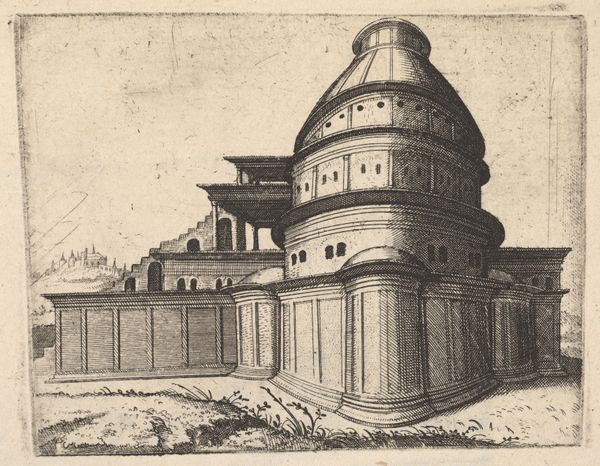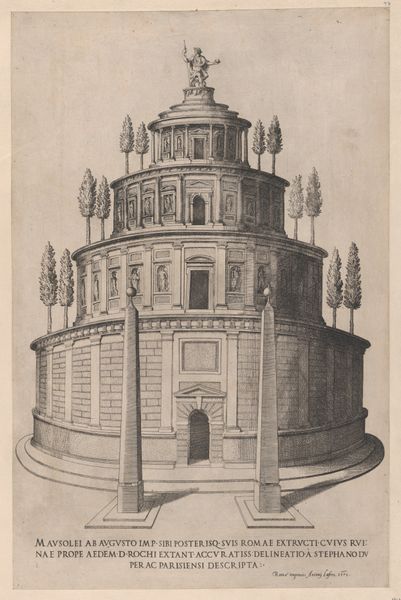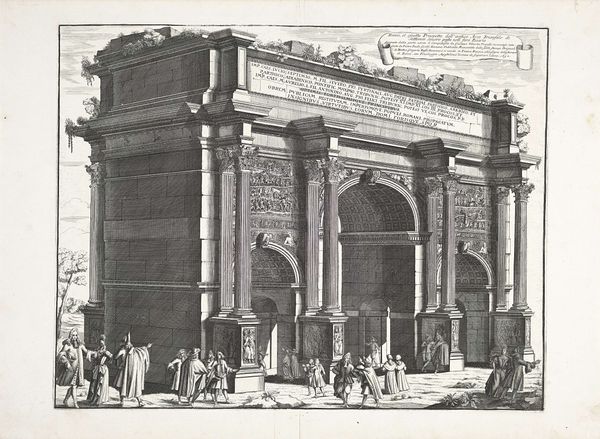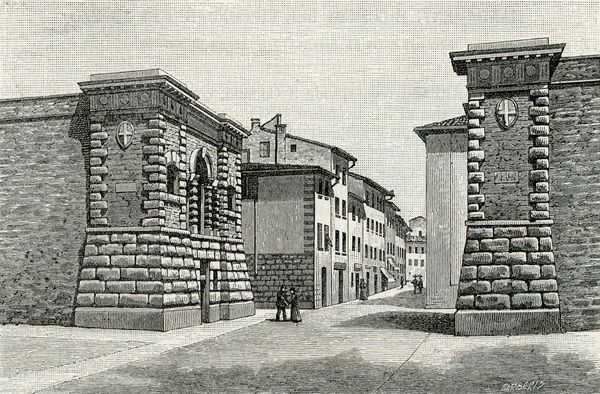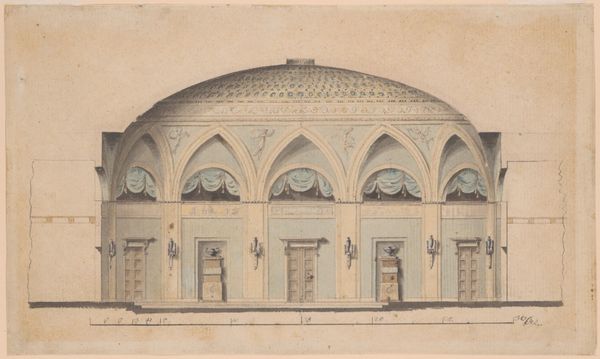
Copyright: Public domain
Editor: This is Giuseppe Barberis’s "Veduta Del Camposanto," an etching from 1897. It shows a series of neoclassical buildings, maybe a mausoleum or cemetery, and there’s this feeling of quiet solemnity, amplified by the print medium. What strikes you about it? Curator: I see a careful construction of power, wouldn't you agree? The crisp lines of the architecture speak to a desire for permanence, order, and control—ideals rooted in Neoclassicism. Consider, though, what that "order" meant historically: Often, it enforced hierarchies related to race, class, and gender. Does this aesthetic of idealized structure have a dark underbelly? Editor: That's a really interesting perspective, I hadn't considered the socio-political aspects. The clean lines seemed like just an artistic choice, evoking this timeless aesthetic. Curator: Exactly! It is both. Etchings, with their reproducibility, democratized art, but simultaneously served dominant ideologies by representing powerful architecture. Consider who gets to be memorialized like this, in such grandeur. Who is forgotten or erased? How might this space be contested or re-appropriated? Editor: So you're saying that this beautiful, seemingly neutral depiction of architecture actually reinforces existing power structures? Curator: It can function that way, yes. It's vital to interrogate these seemingly neutral images and unpack the cultural narratives they uphold or challenge. Neoclassicism, here, may appear simply as a revival of classic ideals, yet it's deeply entwined with societal power dynamics. Editor: I will never look at Neoclassical art the same way. Thinking about it as more than just an aesthetic is important, to consider who gets to have their story told and their existence recognized through art. Curator: Precisely! Seeing art as active within the historical landscape, is vital. It makes for more meaningful engagement.
Comments
No comments
Be the first to comment and join the conversation on the ultimate creative platform.

